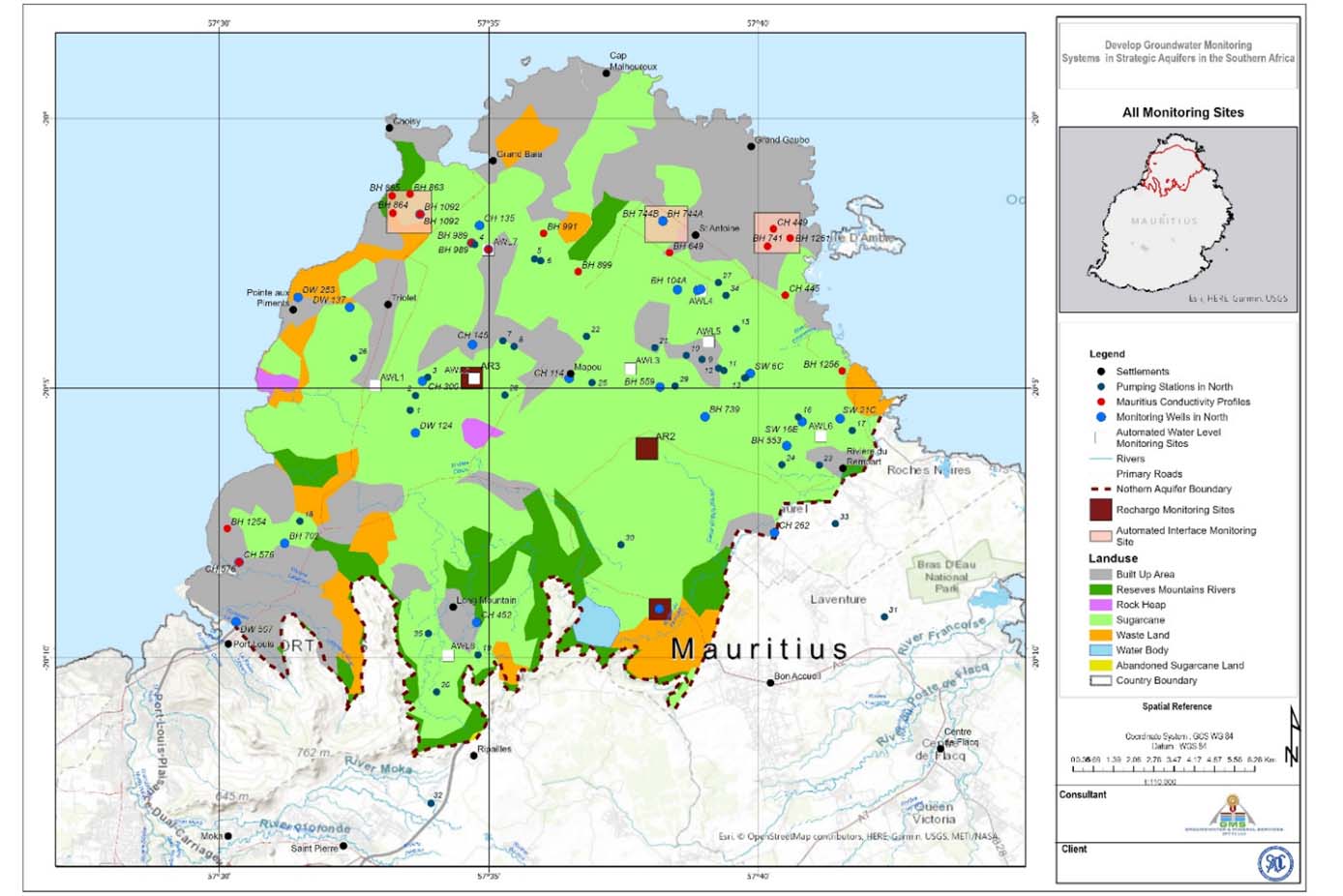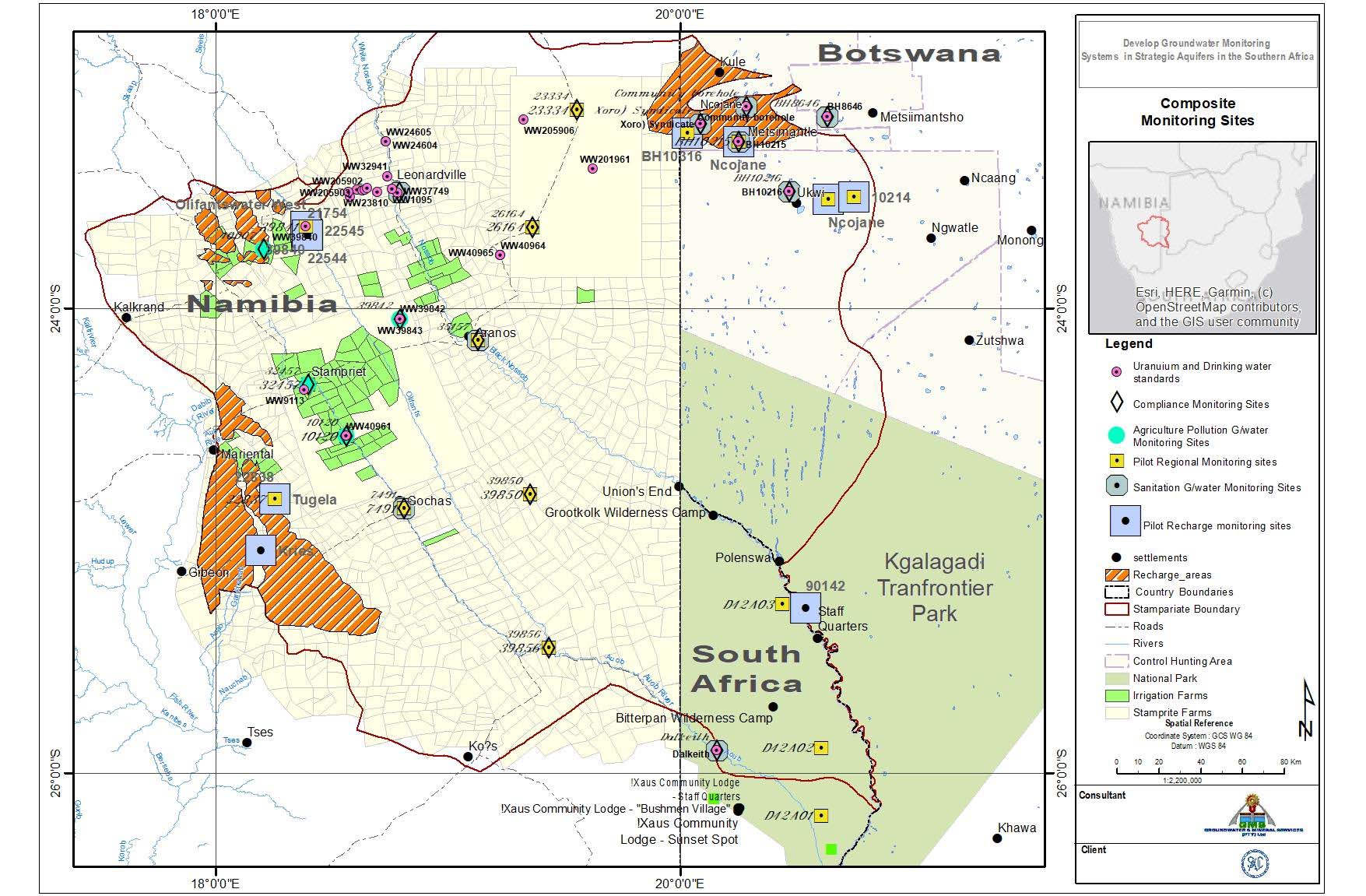The Development of Groundwater Monitoring Systems in Strategic Aquifers in Southern Africa
The Southern African Development Community (SADC) hosts as many as 32 transboundary aquifers (TBA) amongst various member states. These aquifers constitute strategic regional and national aquifers that are significant to the groundwater supply to improve livelihoods within the member countries. There are numerous challenges to sustainable resource management and utilisation of these aquifers which include limited understanding of the said aquifers due to inadequate groundwater monitoring and groundwater data within the respective Member States and to increase knowledge of the aquifers’ sustainability and promote effective resource management and utilisation, it was critical to develop strategic groundwater monitoring systems within selected typology aquifers. This project was commissioned to identify three (3) respective aquifers, each representative of one of three typologies, that would be used as “pilot” project areas for developing groundwater monitoring systems. The monitoring systems, once established, will be used to review the success or any challenges encountered and draw lessons that can be used to improve future groundwater monitoring data collection and assist in better understanding and management of similar aquifers in other southern African states. It was envisaged that improved groundwater monitoring data collection would also help strengthen institutional arrangements through data sharing, supported by establishing data sharing protocols.
The project had three main objectives:
- Identification and selection of three strategic Aquifers across the SADC Region along three respective typologies:
- Fractured or Karst TBA on mainland SADC
- Coastal Aquifer
- Island State Aquifer
- Development of a groundwater monitoring plan for each respective selected strategic aquifer
- Preparation of procurement documents and bill of quantities for works, goods, and services for the installation of a monitoring system using telemetry in each of the representative three (3) typology aquifers
The Northern Aquifer V occurs in northern Mauritius and falls over the relatively flat and gentle volcanic basaltic plains that are sloping to the west, north, northeast and east toward the coastline. The geology of Mauritius is characterised by three major volcanic episodes which occurred after the primary formation and stabilisation of the island base. The volcanic episodes resulted in basaltic breccias. The high groundwater potential is within the recent scoriaceous or vesicular and tunnelled basalts and the intermediate series basalts due to the high porosity and permeability of these structures. The ancient basalts form the impermeable rocks that mark the southern boundary of Aquifer V and have low groundwater potential due to the lack of primary porosity and permeability. Groundwater accounts for more than 50% of the water supply in Mauritius. The estimated total annual groundwater abstraction in Mauritius is approximately 160 million cubic metres (Mm3). Approximately 33.5 Mm3/year is abstracted from the northern aquifer, Aquifer V. The revised groundwater network was designed to (i) evaluate the impacts of abstraction on groundwater levels; (ii) assess groundwater recharge upstream and groundwater discharge in the downstream areas demarcated based on the groundwater flow pattern; and (iii) monitor groundwater quality. The location of the monitoring sites is shown in the figure below. Terms of reference and bill of quantities were developed for the development of the groundwater monitoring system.

The Stampriet Basin Aquifer System (STAS) occurs in Central Namibia, western Botswana and part of the Northern Cape Province of South Africa. The STAS is a fractured sedimentary aquifer with high groundwater potential within a multi-layered Lower Karoo sandstone stratigraphy and overlying unconfined Kalahari sediments, particularly in Namibia. The total maximum abstraction is approximately 14 Mm3/year. The revised groundwater network is designed to (i) evaluate the impacts of abstraction on groundwater levels and resources from the Kalahari, Auob (Namibia)/Otshe (Botswana) and Nossob aquifers; (ii) monitor and quantify groundwater recharge; and (iii) monitor groundwater quality. The following monitoring network was proposed for the STAS:
- 46 boreholes to be equipped with automatic data loggers for abstraction impacts and regional monitoring
- 14 boreholes will be monitored for recharge
- 18 boreholes in the Kalahari aquifer will be monitored for poor sanitation pollution
- 7 boreholes within irrigated farmland in Namibia will be monitored for agricultural pollution
- 18 boreholes will be monitored for compliance with national drinking water standards
- 27 boreholes will initially be monitored for baseline radionuclides
- 21 boreholes will be monitored for the proposed in-situ mining in the northern part of the STAS in Namibia
Following the initial sampling results, the plan is to extend the monitoring network to the south. To provide basin-wide baseline monitoring data, four production boreholes and one production borehole will be monitored for radionuclides in Botswana and South Africa. The total number of sites to be monitored for the proposed transboundary monitoring objectives is 81.

A groundwater monitoring plan consisting of the recommended monitoring borehole design, parameters to be monitored, monitoring frequency, and monitoring methodology has been provided. Terms of reference and a bill of quantities for developing the groundwater monitoring system have been provided.
The Coastal Sedimentary Basin IV was chosen for the coastal aquifer. CSBIV is shared between Angola and Namibia. It was only mapped in Namibia and was postulated to continue northwards into Angola. The lack of hydrogeological data across the Cunene River makes it challenging to ascertain the transboundary nature of the basin positively. However, subsequent finding shows a possible but limited connection, if any, between the basin mapped in Angola and the existing one in Namibia. The basin mapped in Angola is likely to be very shallow, with subcropping to outcropping basement rocks, hence spatially limited in extent and depth. A larger basin, however, not connected to CSBIV, has been mapped in the east around the Otumba-Espinheira area. Although thick sediments have been inferred in Namibia, part of the basin, without borehole data, it cannot be confirmed whether these are dunes or whether a saturated aquifer exists. A monitoring network design was not pursued for the aquifer system.
Project Manager: Eng. James Sauramba, jamess@sadc-gmi.org




